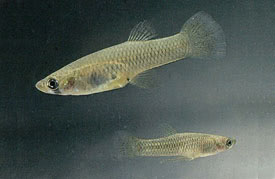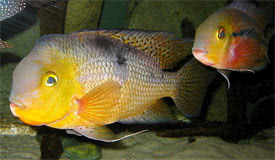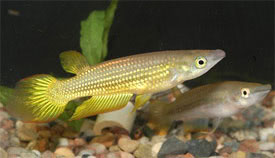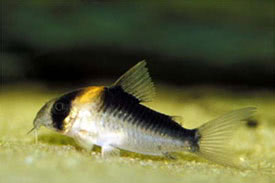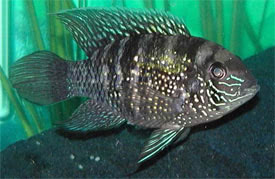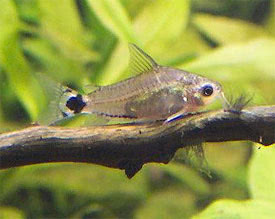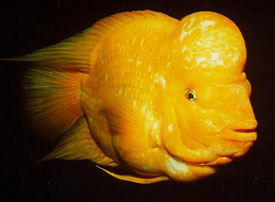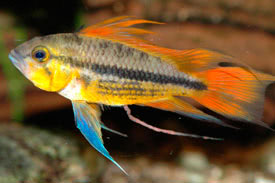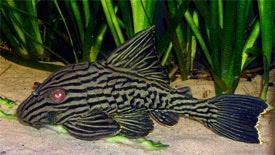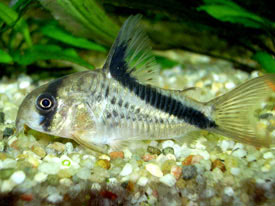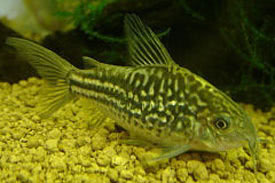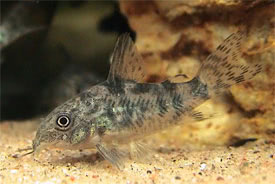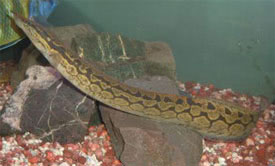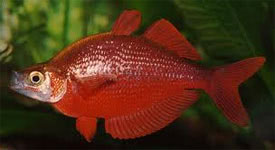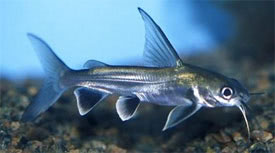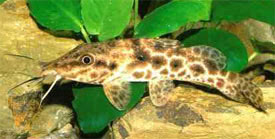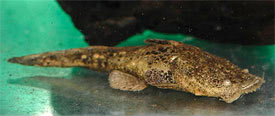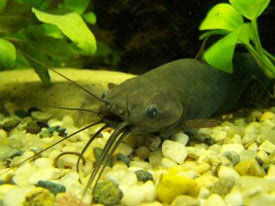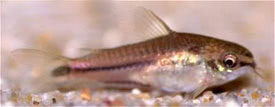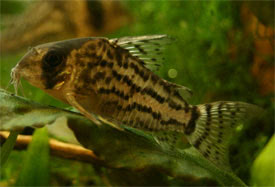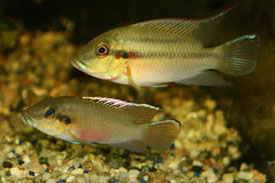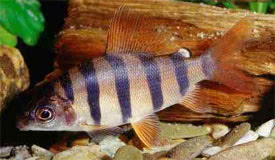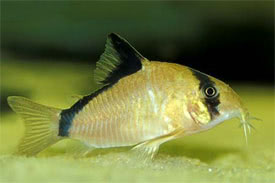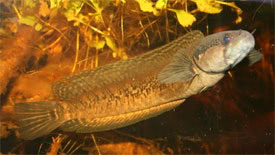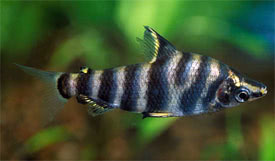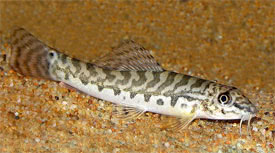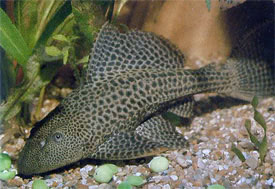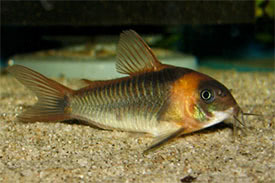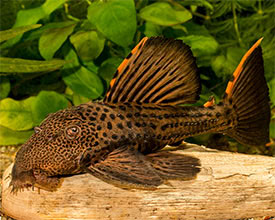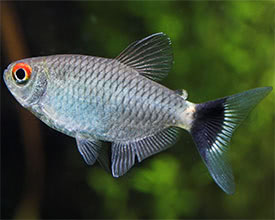
 Magyarul / Hungarian
Magyarul / Hungarian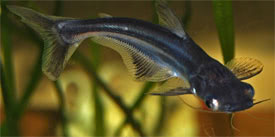


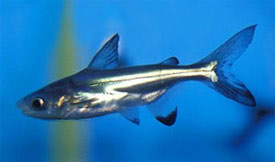
- Scientific name: Pangasianodon hypophthalmus
- Synonyms: Pangasius hypophthalmus, Helicophagus hypophthalmus, Pangasius hypophthalmus, Pangasius sutchi
- Common name: Iridescent Shark Catfish, Pangasius Catfish
- Group: Catfishes
- Habitat: Asia; Thailand, Laos, Cambodia and Vietnam.
- Size: 130 cm in nature, however in aquaria usually smaller, "only" 90 cm
- Biotope: Inhabits in Makong river and in Chao Phraya river.
- Social behavior: A relatively peaceful species, but smaller tankmates may be eaten. Very nervous fish. Best kept with large, peaceful upper water region, shoaling species.
- Diet: Omnivorous; a juvenile will require a good amount of protein in the diet, like earthworm or bloodworm, while older fish needs a greater proportion of vegetable matter, such as spinach and peas.
- Breeding: Reproduction in an aquarium has not been successful.
- Tank: Minimum 1000 litres (For the juveniles)
- Population: 3 fish for 5000 litres
- Decoration: Large bogwoods and flat stones, but the most important is the large swimming space. The lighting should be dim. Floating plants will reduce this fishes skittishness.
- Temperature: 22-26 °C
- pH: 6.5-7.5
- Hardness: 2-30NK°
- Lifespan: 20 years
Description: This is an extra large fish that is not ideal for home aquaria, but is unfortunately sold in many fish stores as small juveniles. Juvenile specimens have a black stripe along the lateral line with a second long black stripe below the lateral line. Adult fish are uniformly grey in colour. On the anal and caudal fin there is a black stripe. The fins are grey in color. An albino variety is also, commonly, available.
It's a very active open water species and tends to be skittish when kept in small aquarium. When scared the fish bangs into the tank glass and items of decor, often resulting in injury. In nature it's a shoaling catfish and will be less shy when maintained in a group, of course in a tank that large enough to house a small group. When juvenile sexual differences are impossible to detect, but mature males have darker stripes and are more slender than the females. In nature during the spawning season (from May to July) they migrate upstream to spawn. Obviously these conditions are impossible to replicate in the home aquaria. It's being bred commercially in huge ponds on Far Eastern fish farms.




